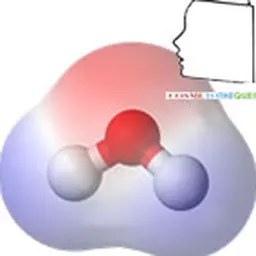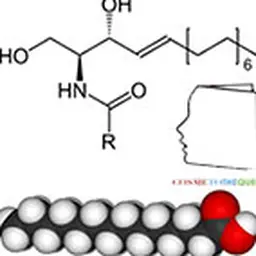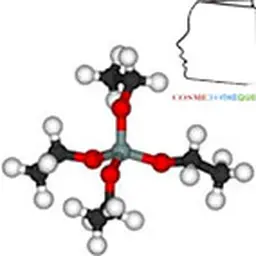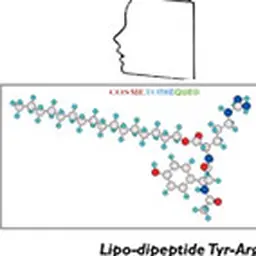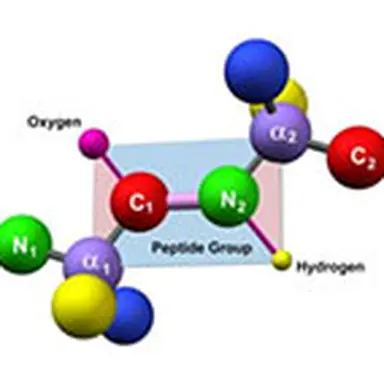
In 1993, with the creation of the European Institute of Cell Biology (now Lucas Meyer Cosmetics), several scientific data were going to allow the elaboration of the research philosophy which the creators of this company wished to develop. Many new discoveries concerning the skin upset the acquired knowledge.
The discovery that skin cells, and more particularly epidermal cells, had specific receptors for certain neurotransmitters opened up a new field of investigation. Indeed, skin cells with neurotransmitter receptors allow them to modulate all the properties of the skin: cell growth, inflammatory mediator production, immunity, sebum excretion, vasodilatation.
Several neurotransmitters were beginning to be identified: neuropeptides, catecholamines, acetylcholine. For example: melanocytes and keratinocytes have MC1-R receptors at α-MSH, keratinocytes can also produce substance P and CGRP. Note that most of these mediators are peptide in nature.
The second major scientific advance concerned the development of combinatorial chemistry. Modeling molecules obtained by the combinatorial method and predicting their properties will enable chemists to synthesize many substances with a desired biological activity.
This powerful synthesis method offered countless original molecules and made it possible to respond to the tremendous increase in demand for compounds, linked to the growing identification of new cutaneous biological receptors.
These high throughput combinatorial methods were originally developed for the synthesis of small peptides. It was also possible to modify the peptide sequence in order to: - to increase enzymatic stability in contact with the skin, - increase bioavailability.
On the other hand, since the 1970s, small biologically active peptides have been described and studied for their cellular activities. These molecules mainly played a hormonal role by acting on specific receptor sites. From pharmaceutical research, these peptides were to interest the world of cosmetology.
Based on all these data, IEB/Lucas Meyer Cosmetics has a biomimetic approach that consisted in synthesizing peptides with specific biological activity. This biomimicry went through a multi-stage process: from a protein or a neurotransmitter with an identified structure or established functionality, specific tests were developed to identify, by combinatorial chemistry, the only active sequence and to prepare either agonists or antagonists of neurotransmitters, or active ingredients inducing the synthesis or release of neurotransmitters.
On the pharmaceutical industry side, studies had shown that the disappearance of thymus and its hormones (thymopoietin or youth hormone) with age was directly linked to a decrease in cutaneous immune defences and the appearance of signs of aging. There are many structural and functional similarities between thymus cells and skin cells. Indeed, many hormonal mediators and cytokines produced at the cutaneous level are identical to those produced by the thymus.
The combination of these different scientific elements led IEB/Lucas Meyer Cosmetics to design a family of biomimetic peptides of the"Youth Hormone" designed to fight against aging by restoring the skin's natural defense functions. Among these peptides, Thymulen®4 and Thymulen®2 have been developed as biomimetics specific for thymic cell maturation factors.
Christian Dior, anxious to put the most advanced scientific advances at the service of the beauty and youth of the skin, could only be interested in a biomimetic peptide of the"youth hormone". A close collaboration that began with the creation of IEB/Lucas Meyer Cosmetics led to Christian Dior's decision to request the exclusivity of one of these two peptides for its new range Capture a real anti-ageing revolution.
Through this collaboration, the IEB became one of the pioneers in the biomimicry of peptides in cosmetology, which over the years have developed into a high-tech company and become essential active ingredients in active anti-ageing cosmetics. Destiny sometimes holds surprising surprises.
For this new range Capture Christian Dior introduced the use of liposomes in cosmetics. The company that supplied the phospholipids constituting the liposomes at that time was Lucas Meyer France. The takeover of these two companies by the Unipex Group would lead to the merger of their R&D.
| Contribution made by Estelle Loing Estelle obtained her PhD in Cell Biology in 1998 at the Pasteur Institute in France and at the University of Tübingen in Germany after completing research work on peptides and lipopeptides. In 2001, she obtained a Master's degree in Biotechnology Commercialization Management. In 2008, she joined the Lucas Meyer Cosmetics team in Canada as Director of Global Research and Development. Since the beginning of his career, Dr. Loing has written only 27 scientific publications and published 7 patents. The Biopeptides dossier is coordinated by Karl Lintner to whom we have already received several contributions. Thanks to both of them. |
| About Lucas Meyer Lucas Meyer Cosmetics is the Unipex Group business unit that develops, manufactures and markets innovative ingredients for the cosmetics industry. This company offers many active ingredients, functional ingredients and vectors of various origins. |
|
About Thymulen®4
Origin Biomimetic peptide derived from the youth hormone thymopoietin INCI Name Water, Dextran, Acetyl tetrapeptide-2 Mechanism of action Biomimetic thymopoietin Properties - Increases skin regeneration - Strengthens the skin's immune defences Dosage 5-10 % Status - Preservative-free - China compliant Tests - Test In vitro - Clinical test Applications Anti-ageing / Anti-wrinkle / Cell renewal |




